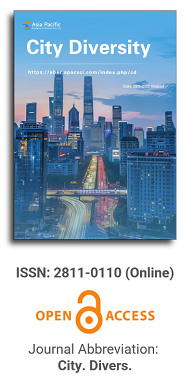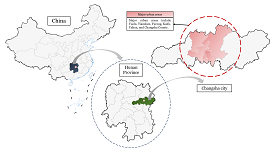
Asia Pacific Academy of Science Pte. Ltd. (APACSCI) specializes in international journal publishing. APACSCI adopts the open access publishing model and provides an important communication bridge for academic groups whose interest fields include engineering, technology, medicine, computer, mathematics, agriculture and forestry, and environment.

As China's pillar industry, the property market has suffered a considerable impact in recent years, with a decline in turnover and many developers at risk of bankruptcy. As one of the most concerned factors for stakeholders, housing prices need to be predicted more objectively and accurately to minimize decision-making errors by developers and consumers. Many prediction models in recent years have been unfriendly to consumers due to technical difficulties, high data demand, and varying factors affecting house prices in different regions. A uniform model across the country cannot capture local differences accurately, so this study compares and analyses the fitting effects of multiple machine learning models using February 2024 new building data in Changsha as an example, aiming to provide consumers with a simple and practical reference for prediction methods. The modeling exploration applies several regression techniques based on machine learning algorithms, such as Stepwise regression, Robust regression, Lasso regression, Ridge regression, Ordinary Least Squares (OLS) regression, Extreme Gradient Boosted regression (XGBoost), and Random Forest (RF) regression. These algorithms are used to construct forecasting models, and the best-performing model is selected by conducting a comparative analysis of the forecasting errors obtained between these models. The research found that machine learning is a practical approach to property price prediction, with least squares regression and Lasso regression providing relatively more convincing results.
Return to spatial differentiation and respect life diversity—Two core supporting points to avoid the deviation of urban fine governance
Vol 3, Issue 1, 2022
Download PDF
Abstract
Modern urban governance emphasizes the precise governance of the “short board” of urban governance, forming a mechanism of fine governance. In view of the historical basis and realistic structure of the differentiation of physical space at the block level and the diversity of life at the community level in modern cities, the short board of urban governance should be confirmed and solved through democratic participation based on the context of spatial differentiation and diversity of life, rather than through simple administrative urban planning, so as to form a corresponding structure consistent with rigid urban management. The vitality of a city lies in the construction of differentiated block space and diversified community autonomy. Therefore, the urban path of fine governance is fine governance based on public recognition. It should include the establishment of the concept of spatial differentiation and diversity of life, the construction of democratic relations among modern urban governance subjects, the transformation of urban planning to community planning, and the avoidance of destructive renewal and one-way material construction, go beyond the sports regulation of urban issues and apply the big data technology in modern urban governance.
Keywords
References
- Wu Z, Li D. Principles of urban planning. China Construction Industry Press; 2010.
- Alan D, John S. Klemanski. Modes of Governance in Comparative Perspective, Volume 4. In: NED New edition Power and City Governance. University of Minnesota Press; 1999. pp. 13–30.
- Jiefang Daily. Buildings can be read, streets are suitable for walking, and the city always has temperature. Jiefang Daily. 2017.
- Urban management should be as delicate as embroidery. Available online: http:// news. Ifeng. Com. 2017–03–05 (accessed on 1 November 2020).
- Jane J. The Death And Life Of Great American Cities. Published by Random House; 1992.
- Kearns A, Forrest R. Social Cohesion and Multilevel Urban Governance. Urban Studies. 2000; 37(5–6): 995–1017. doi: 10.1080/00420980050011208
- Tong M. Contemporary Chinese Urban Design Reader. China Construction Industry Press; 2016.
- Zang Z, Fan Y. Urban Environmental Governance: Exploration and wisdom of East Asia. Shanghai People’s publishing house; 2017.
- Frederick WT. The Principles of scientific management. In: Ma F (editor). Harper & Brothers; 2014.
- Cahill DD, Orsini J, Deming WE. The Essential Deming: Leadership Principles from the Father of Quality. In: Orsini JN(editor). Mcgraw Hill Education; 2012.
- Zhang X. New Delicacy Management Theory. Springer Berlin Heidelberg; 2011. pp. 183–187.
- Wang X. Local government in the new urbanization period of the United States: the game between regional planning and local autonomy. Xiamen University Press; 2010. pp. 225–242.
- PASGR. Inception Workshop on Urban Governance and Turning Africa Cities Around. Department for International Development; 2015.
- John F. The Governance of City Building. In: China’s Urban Transition, NED New edition. University of Minnesota Press; 2005. pp.95–116.
- Zhang W. “The world of cities”: modern cities and their problems. Social Science Literature Press; 2012.
- Mao Z. Oppose the book doctrine Collected works of Mao Zedong’s investigation. Beijing: People’s publishing house; 1991.
- Soonhee K. Collaborative Leadership and Local Governance. In: Rosemary O, David MVS, Soonhee K, et al. (editors). The Future of Public Administration around the World Book Subtitle: The Minnowbrook Perspective. Georgetown University Press; 2010.
- Peter R. Hugh Sykes Urban renewal manual. In: Ye Q, Ni X (editors). Beijing: China Construction Industry Press; 2009.
Supporting Agencies
Copyright (c) 2022 Fuguo Han

This work is licensed under a Creative Commons Attribution 4.0 International License.

This site is licensed under a Creative Commons Attribution 4.0 International License (CC BY 4.0).

Prof. Mehmet Cetin
Kastamonu University,
Turkey
Polish Scientific Bibliography

